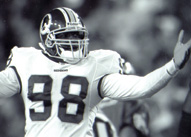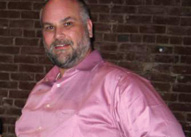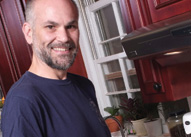

The Emory Reproductive Center is the only medical center in Georgia that belongs to the Oncofertility Consortium, an NIH-sponsored network of medical specialists, scientists, and scholars who study the relationships between health, disease, survivorship, and fertility preservation in young cancer patients. The new discipline bridges information and technology gaps between oncology and reproductive medicine, and it provides viable options for women who want to preserve their fertility after cancer, says Carla Roberts, who leads Emory’s oncofertility program.
Men have long had options for preserving fertility when faced with cancer. Sperm banking is routine and preserves fertility for most men, according to Roberts. “Now new advances in fertility are giving many female cancer patients a chance to ‘bank’ their fertility too,” she says.
Each year, the American Cancer Society estimates that approximately 55,000 females who are either prior to or in their reproductive years receive a cancer diagnosis. Advances in cancer treatment during the past few decades have improved survival significantly. For people younger than 45, the overall survival rate is approximately 80%, according to Roberts.
To help patients explore options to preserve fertility, Emory offers rapid consultations for any woman of reproductive age diagnosed with cancer. Embryo banking is one route offered to most women (unless they have a cancer such as hormonally responsive breast cancer). This process, known as emergency in-vitro fertilization, takes up to two weeks and requires hormone stimulation of the ovaries to mature sufficient numbers of eggs. Technicians then retrieve the eggs and fertilize them with sperm, freezing the resulting viable embryos until a woman has completed cancer treatment and is ready to attempt pregnancy.
Another alternative is cryopreservation of oocytes, the female germ cells produced in the ovaries that give rise to eggs. However, two challenges exist with this approach: the success rate is lower than with embryo freezing, and the weeks of hormone therapy needed to obtain a sufficient number of mature oocytes can delay cancer therapy. Still, great advances in the understanding of this approach makes cryopreservation of oocytes the cutting edge for oncofertility research and a clinical focus, says Roberts.
Emory is in the early stages of enrolling patients between the ages of 18 and 40 who have potentially curable cancers (including leukemias, lymphomas, and breast cancers) in an NIH-sponsored clinical study to preserve fertility. The researchers’ goal is to establish a technology that will enable long-term preservation of ovarian tissue, including the production of viable oocytes by cryopreservation of ovarian tissue prior to chemotherapy or radiation. Another objective of the study is to develop in vitro techniques that will allow maturation of oocytes from cryopreserved ovarian tissue. –Sherry Baker
For more information about oncofertility and the Emory Reproductive Center, call Karen Birdsong at 404-686-3749.

| ny | tiny font | ny |
“The pro athletes are concerned not only about feeling better but also about their livelihood. They want to make sure they are getting the best treatment because it is going to affect their bottom line.” |
||
— Forrest Pecha, program manager of
Emory Sports Medicine |
Lemar Marshall is big, strong, fast, and tough. At 6’2” and 225 lbs. of solid muscle, the 31-year-old Cincinnati Bengals middle linebacker looks as though he could take on anything and come out unscathed. But three sports injuries over the past few years temporarily sidelined the NFL football player—and he turned to Emory Sports Medicine for treatment.
In 2006, while playing for the Washington Redskins, Lemar dislocated his shoulder, and Emory’s chief of Sports Medicine, John Xerogeanes, performed the surgical repair. That same year, he repaired Marshall’s torn meniscus—a rubbery, C-shaped disc that cushions the knee. Last fall, when Marshall’s Achilles tendon was ruptured during NFL action, he once again came to Emory Sports Medicine for surgery, this time by ankle specialist Sam Labib.
Marshall’s trek to Emory for treatment is a familiar destination for many NFL players. In fact, Emory Sports Medicine has treated or consulted with more than 100 NFL players over the past several years.
Although each NFL team has its own team doctors, players often consult with Emory physicians for second opinions. “As subspecialists, we are contacted to see if we agree with the treatment plan and diagnosis,” says Xerogeanes. “The evaluation also needs to be turned around quickly—sometimes within 24 hours.”
What’s the biggest difference between treating an injured weekend warrior and an NFL player? “The pro athletes are concerned not only about feeling better but also about their livelihood,” says Forrest Pecha, program manager of Emory Sports Medicine. “They want to make sure they are getting the best treatment because it is going to affect their bottom line. Injuries not only can end careers but also impact contract negotiations. Good news about a prognosis or surgery outcome may put a positive swing on those contracts.”
The NFL players make great patients, Pecha adds. “They are pros and work hard at rehab. They come here knowing that we understand their livelihood and that parts of their career are in their hands. We will do whatever we can to get them back in the game.” –Sherry Baker
These days, Emory’s Winship Cancer Institute is blue, but that’s a good thing. Winship has received designation as a Blue Distinction Center for Complex and Rare Cancers from Blue Cross and Blue Shield of Georgia. Winship is the only facility in metro Atlanta to earn the designation for complex inpatient and surgical care, awarded to medical facilities that have demonstrated expertise in delivering the highest quality health care. See cancer.emory.edu.


| ny | tiny font | ny |
Six months after undergoing adjustable laparoscopic band surgery, Michael Kay has lost more than 140 pounds and is healthier. |
At 41, Michael Kay tipped the scales at 324 lbs. His blood pressure and cholesterol levels were up, and he had back and knee problems, prompting his family doctor to refer the Tucker, Georgia, resident to Emory. Six months after undergoing adjustable laparoscopic band surgery, Kay has lost more than 140 pounds and a host of health problems. Today his blood pressure and cholesterol levels are normal. He no longer needs medication to control his cholesterol. And his knee pain is gone.
“I have a lot more energy, confidence, and stamina than I did before,” says Kay.
Kay is not alone in his struggle with obesity. According to the CDC, approximately one-third of all adults and almost 20% of children and teens in the United States are obese. The excess weight increases the risk of high blood pressure, heart disease, cancer, stroke, gallbladder disease, type 2 diabetes, and other serious conditions.
While there is no magic quick fix to drop pounds, medically sound strategies do exist. The Emory Bariatric Center helps people meet their weight loss goals with a multidisciplinary program including nutrition and exercise therapy, lifestyle education, pharmacotherapy, counseling, and liquid meal replacement. If necessary, as in Kay’s case, surgery can help seriously overweight people reduce their size and improve their health status—sometimes dramatically.
The lap band procedure is one of the more frequently performed surgeries at the center. During the operation, a surgeon makes four to five small incisions in the abdomen and cinches a small band around the upper portion of the stomach. The band creates a small pouch below the esophagus that slows the passage of food into the remainder of the stomach, resulting in the patient feeling full sooner. By injecting or removing saline contained within the band, doctors can adjust the band for individual needs. The procedure also is potentially reversible.
“We place more lap bands than any other program in metro Atlanta,” says bariatric surgeon Edward Lin. “This procedure has become popular because it is minimally invasive and reversible, and it doesn’t change basic anatomy.” In the overwhelming majority of Lin’s patients, the surgery has proven a fix for type 2 diabetes and other obesity-related diseases.
In addition to the lap band procedure, the bariatric center also offers gastric bypass, which reduces calorie and nutrient absorption by diverting food from the first segment of the small intestine. And surgeons also perform a sleeve gastrectomy, in which they laparascopically remove about 75% of the stomach, restricting food intake without intestinal bypass or malabsorption.
In January, the center received accreditation as a level 1 bariatric surgery center of excellence from the American College of Surgeons, an accreditation denoting the highest level of quality care for patients like Michael Kay. –Sherry Baker
For more information about
the Emory Bariatric Center, see
emoryhealthcare.org or call
404-778-7777.
The key to long-lasting repairs of two common sports injuries could be surgical techniques that more closely reproduce natural, pre-injured anatomy. That’s the approach taken by Emory’s John Xerogeanes (known as Dr. X) and Spero Karas. The two orthopedic surgeons have pioneered new procedures for torn rotator cuffs in the shoulder and damaged ACL ligaments in the knees.
The rotator cuff is composed of muscles that surround the ball of the shoulder joint. Tendons associated with that muscle group can weaken with age, overuse, or injury, becoming vulnerable to tear. Karas is one of only two surgeons in the Southeast using a new double-row arthroscopic repair for rotator cuff injuries, in which he secures the tendon to the bone at two sites rather than one.
In the traditional rotator cuff surgery, physicians implant a single anchor to secure the tendon. However, traditional anchors insert only to a depth of about 5 mm into the bone, whereas in actual anatomy, the insertion to bone is closer to 16 mm.
“If you take a tendon that has a 16-mm footprint and repair it with a 5-mm footprint, the repair is weaker, and the area of healing is only about one-third of normal size,” says Karas. “The double-row technique is stronger and does a better job of restoring normal rotator cuff anatomy.”
Karas and Xeageanes follow a similar orientation in repairing ACLs in selected patients. (Dr. X currently performs the highest number of double bundle ACL repairs in the Southeast.) They use two grafts (with two tunnels in the femur and two in the tibia) to replace the injured ACL. By contrast, standard ACL reconstruction uses a single graft with one tunnel in the femur and one tunnel in the tibia.
The ACL controls both forward and backward movement and twisting of the knee, and the double-bundle duplicates this movement. According to Dr. X, studies have shown it to be superior to standard reconstruction in controlling knee motions—providing an increase in control that should decrease risk of further injury and preserve the patient’s knee.
Good candidates for the procedure are patients whose previous ACL reconstruction has torn again and patients at risk for further injury due to mechanical reasons. Knock-kneed people and tall, young, loose-jointed female athletes top the list. –Sherry Baker
Current Issue | Past Issues | Contact Us | Make a Gift
Back to Top | WHSC home
© 2008. Emory University, All rights reserved.
Back to Top | WHSC home
© 2008. Emory University, All rights reserved.
